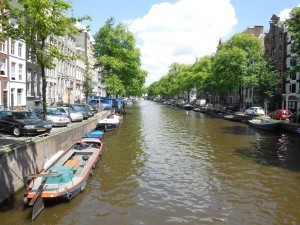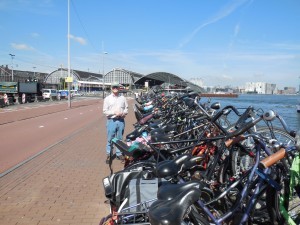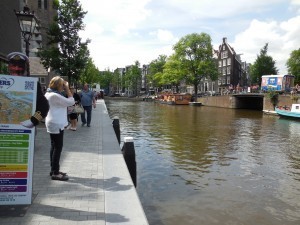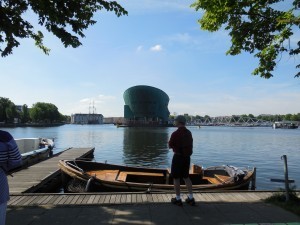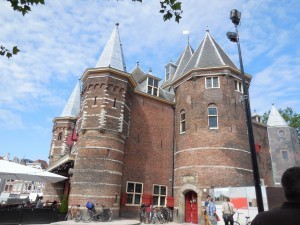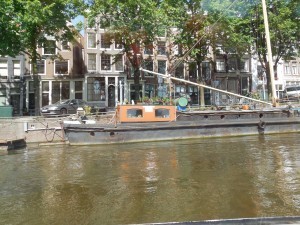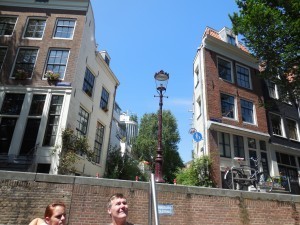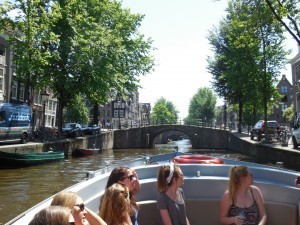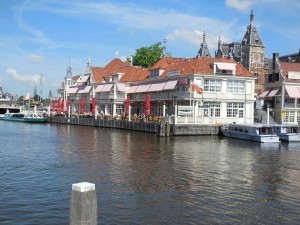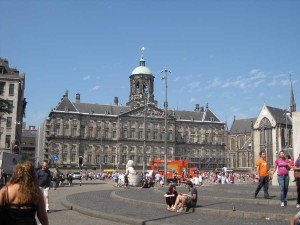Rhine Mystery #2 — Solved!
Susan Vaughan here.
If you read my June post about Dutch windmills (http://bit.ly/1lZ6iND), you’ll realize this month’s post continuing my cruise up the Rhine River is out of order. Should’ve posted about Amsterdam first. But here goes. Venice, Italy, is known as the city of canals because it’s built on a group of islands. So why Amsterdam in northern Europe?
We spent two and a half days in beautiful Amsterdam. It’s a very walkable city, not too large, with excellent public transportation. The biggest hazard is the hundred thousand bicycles zooming along the bike paths and streets. A pedestrian doesn’t dare cross pavement without checking for bikes. The Central Station even has a three-deck parking garage only for bicycles. They’re parked everywhere along the street and canals as well.
We saw ads for bike tours but shuddered at the image of tourists trying to navigate among all the locals. Not us. We used the Hop on-Hop Off buses and canal boats. Here’s where we waited for a canal boat.
While much of Amsterdam is modern and high tech, like the science museum called NEMO, we tended to explore the older, central parts of the city.
The towers of the ancient city gate dated from centuries ago when the city was much smaller and had to be defended from invaders.
Houseboats, some created out of barges, parked on the canals. Owners pay taxes and receive city services like sewage and water.
More canals, some with houses leaning a bit because of shifting foundations on a sandy bottom.
More canals and bridges, very scenic, some narrow.
Some wide and exotic, with cafes and hotels. We wanted to eat at this cafe and gaze out at the passing boats but we ran out of time.
So, why the canals? Dam Square, known locally only as the Dam (Dutch: de Dam) derives its name from its original function: a dam on the Amstel River, hence also the name of the city (Amstel Dam > Amsterdam). Built in approximately 1270, the dam formed the first connection between the settlements on the sides of the river. Today the upper part of the Dam is a busy town square with the royal palace, the Madame Tussaud’s Wax Museum, and hotels.
Other dams and dikes do the same for the Rhine and other rivers. The Rhine’s a wild river, or at least it was centuries ago. Uncontrolled, the water flowed in a Delta far and wide. Upstream in the 1800’s, engineers worked to shorten and tame the Rhine, while in the Netherlands (Lowlands, the reason all the water flows to there) Dutch engineers designed and constructed the dams, dikes, and canals that tamed the waters and made them navigable.
Why, you may be wondering, did the Dutch want to build a city where the water could swamp them at any time? Our tour guide’s answer: “Whoever controlled the mouth of the Rhine, controlled the shipping.”
*** My newest release is a box set of the Task Force Eagle trilogy for your Kindle. You can find excerpts and buy links at www.susanvaughan.com.
Lea Wait's Blog
- Lea Wait's profile
- 506 followers


